

 |
 |
 |
 |
 |
 |
 |
 |
|||||||
|
||||||||
"The
Man Can't Bust Our Music" 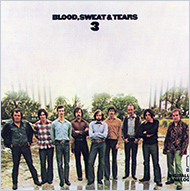 Blood, Sweat & Tears 40,000 Headmen It's almost impossible nowadays to believe that at the time of their brief big moment - with their second album of same name (1968) and their hit singles Spinning Wheel, You've Made Me So Very Happy, and the Laura Nyro-penned And When I Die all charting high - Blood, Sweat & Tears were regarded as "an underground group" such as Led Zeppelin, appearing among the headliners at the historical 1969 edition of the Woodstock Festival. The brainchild of legendary organist Al Kooper - who played the world-famous counterpoint to the vocal line in the game-changing Bob Dylan song (and hit single) Like A Rolling Stone - which in its first incarnation only released the album Child Is Father To The Man ('68), Blood, Sweat & Tears offered a superb, impeccably-sounding instrumental line-up, but also - a weak spot quite common to many groups of that time - an unremarkable compositional attitude. Among the high points of 3 (1970) is their cover of 40,000 Headmen by Traffic, whose repertory Blood, Sweat & Tears had already visited with a new arrangement of the Traffic song Smiling Phases, which they had featured on their second album in a firework of colours. The "stoned", fairy tale-like atmosphere of 40,000 Headmen's original tale gets transposed into a more "urban" landscape, as a memory: listen to the music box that opens and closes this version, which is also enriched by quotes from Bartók, Prokofief, and Monk (his famous composition I Mean You). The arrangement was penned by Fred Lipsius - the group's alto player, who's also featured in a brief, angular piano solo - the main soloist here being Lew Soloff, whose trumpet is elegantly dressed by a blossoming wind section. A multifaceted, ever-changing landscape, with appropriate and skillful counterpoint on bass by Jim Fielder, who at the age of twenty-three was already part of the instrument's history. 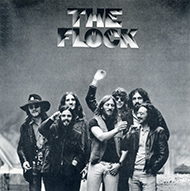 The Flock Clown Checkbook in hand, it appeared that Columbia and Clive Davis wanted to sign everything that breathed in America. A lot of "groups with winds", too, with big chart success for Blood, Sweat & Tears and Chicago. Does anybody remember The Flock?, a line-up whose main soloist was the prodigiously talented Jerry Goodman on violin, whose incorporation into John McLaughlin's Mahavishnu Orchestra meant the end for The Flock. With an agile rhythm section, a good guitar player, a wind section that could sound quite "jazzy", the group also featured a vocal ensemble that at times sounded not too far from "street theatre" groups, also from Frank Zappa's Mothers Of Invention - check Hornschmeyer's Island and Uranian Sircus, both off the group's second album, Dinosaur Swamps (1970). Starting with a guitar riff later doubled by the wind section, vocals in the high register, then a fine violin solo, Clown is - alongside the ballad I Am The Tall Tree - the high point of the first album, of same name (1969), by The Flock. The most interesting moment is the wind interlude that, after a change in tempo and mood, has trumpet and tenor sax coming to the fore in a spirited dialogue that's not too far - surprise! - from the new "electric" Miles Davis of that time. 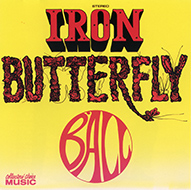 Iron Butterfly In The Time Of Our Lives A giant hit single that I bet makes it possible for group members to pay their bills to this day, In A Gadda Da Vida (1968) also gave a giant riff to thousand garage bands worldwide. Sporting a Vox Continental organ, a "psychedelic" guitar, a fine bass player, and background vocals not too far from Vanilla Fudge, in the end Iron Butterfly were just a de luxe version of a garage band, and just as ephemeral. But thousand groups from that time would have given an arm and a leg in exchange for songs such as In The Time Of Our Lives, Soul Experience, Filled With Fear, and Belda Beast, the high points of the group's third album, Ball (1969). "Mysterious"-sounding effects, somnambulistic time, a riff, then the listener is confronted with this not exactly inviting proposition: "Listen to the clock beat as it ticks out time away/(...)/And listen to the heart beat as it beats our lives away" (with appropriate backing by an anxiety-inducing performance by Lee Dorman on bass). While the guitar phrase that "jumps" at the listener from the right speaker is a perfect explanation of what "dynamic range in recording" means, In The Time Of Our Lives also works to perfection in reminding us of the greater range of topics one could deal with when writing a song in those days: "How you doing people that passed on yesterday?/Did you meet with justice on your judgement day?". 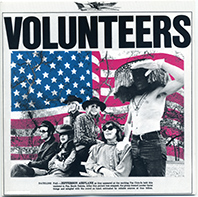 Jefferson Airplane Eskimo Blue Day The album Volunteers (1969) and their appearance at the Woodstock Festival are in many ways the high points of the history of The Jefferson Airplane in their "classic" line-up. Old rumours had the group playing very poorly due to lack of sleep, but the footage that one can easily watch on the Net shows things being quite different, with fine instrumental performances, and vocals that are... not too bad - let's not forget that what we now call "stage monitoring" was at the time something yet to come, which explains the (relatively) poor-sounding vocal performances of such groups as The Byrds, Buffalo Springfield, and Crosby, Stills, Nash & Young. One of the most "mysterious" songs ever penned by Grace Slick, Eskimo Blue Day deals with climate properties and the man-nature opposition ("The human name/Doesn't mean shit to a tree") in a "psychedelic" mood that at times appears to defy one's understanding ("Too much cold in one place breaks/That's why you might know what I mean"). The song features spiky, dramatic comments by Jorma Kaukonen on lead guitar, and subtle and quite original bass lines by legendary bassist Jack Casady.  John Mayall Nature's Disappearing John Mayall's best albums are obviously the early ones - Blues Breakers With Eric Clapton (1966), A Hard Road (1967), Crusade (1967), Bare Wires (1968), and Blues From Laurel Canyon (1968) - an album that, as per its title, offers an "American" narrative - featuring legendary lead guitar players Eric Clapton, Peter Green, and Mick Taylor. Those too many decibels by the new competition - mostly groups featuring his former sidemen - had Mayall think about a change of pace, the new edition of his group being quite original for a typical "blues band" of the day, with no lead guitar, and no drums. The group's first chapter, The Turning Point (1969), greatly succeeded, both artistically - with fresh-sounding amplified classical guitar, saxes, and electric bass - and in the marketplace; while - maybe due to things being too rushed - USA Union (1970) was not what one had hoped it to be, given the featured musicians: Don "Sugarcane" Harris on violin, Larry Taylor on bass, and Harvey Mandel on lead guitar. The album has a very strong opening track, Nature's Disappearing, the leader featured on harmonica and vocals, the violin played through a wha-wha pedal, propulsive and precise bass guitar, and a "spiky"-sounding, dramatic lead guitar, though here Mandel has to play without the sustain made possible from playing at a high volume. The message is about Ecology, something not so common in those days - I can only think about Fresh Garbage and Nature's Way by Spirit and We Took The Wrong Step Years Ago by Hawkwind - a whole section of the album cover being dedicated to things like recycling and non-degradable materials. "Nature's disappearing/And we're guilty of this massive crime". 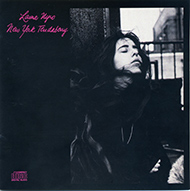 Laura Nyro Save The Country In time, Laura Nyro's natural artistic progression made her songs less and less "coverable" by other artists, so interrupting the fertile dialogue that had taken place - though through several go-betweens - between her art and the mainstream. A song that sees the relationship between the "personal" and the "political" shifting more toward the latter, and which is among the highlights of what is maybe Laura Nyro's perfect album, New York Tendaberry (1969), Save The Country was later covered by The Fifth Dimension and - in my opinion, with better results - by Julie Driscoll, Brian Auger And The Trinity on their best album, Streetnoise. A piano arrangement that's quite near to Gospel but also not too far from such "lighter" Nyro songs as Sweet Blindness, Save The Country talks to "the congregation" with a message that makes things clear, with clever mention of Martin Luther King and the Kennedys, all killed by firearms. The arrangement and the recorded sound - by Roy Halee - have vocals and instruments gradually emerge, with an ending that has the song explode: "Save the Country - Noooooooow!". There's a fanfare - which is bound to remind one of the style of Blood, Sweat & Tears - sounding like a "wake-up" call. Will it be enough? 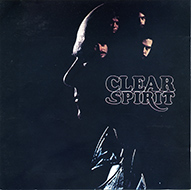 Spirit Ground Hog Thanks to a movie such as Groundhog Day - directed by Harold Ramis, starring Bill Murray - by now even those who don't live in the United States know everything about the event occurring on February, 2 when the marmot looks over its shoulder, its shadow being a sign of how soon winter will end. A great song off an album - Clear (1969) - where choosing the best tracks is an almost impossible task, Ground Hog paints a sinister, anxiety-inducing picture highlighting the uncertainty about the disappearance of these dark times: "Tell me, Mr. Groundhog, what do you say?/Tellin' us good folks old man winter was gone". Sporting acoustic guitars with strings of various gauges, a very tense vocal performance, with bass, drums, and a Wurlitzer electric piano that are almost subliminally featured. Sounds easy, right? 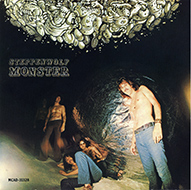 Steppenwolf Draft Resister Steppenwolf had their "immortal song", Born To Be Wild (1968), while also releasing "a certified classic of the psychedelic" era, Magic Carpet Ride (1968). The perspective of a German-born immigrant, John Kay, who was a fan of Country and Blues and sported an attitude that can only be labeled as "blue collar" made it possible for a group that originally stemmed from a Canadian group, The Sparrows, to release more than their fair share of "minor hits", all with easy to recognize instrumental fingerprints in spite of a quite volatile line-up - and sure, having John Kay as a vocalist definitely helped. Monster (1969) is the group's most consistent album, in spite of a great variety of styles. With new member Larry Byrom on guitar, Goldy McJohn and Jerry Edmonton respectively on organ and drums as per their usual, and Gabriel Mekler in the producer seat, they create a work where Kay's vocals states the facts and offers a moral position. Starting with an intoxicating mix of guitars and percussion, "He was talkin' 'bout the Army while he passed his pipe around/An American deserter who found peace on Swedish ground" is the impossible-to-forget opening couplet of Draft Resister, which takes listeners back to the route - from the States to Canada to Swede - via plane, traveled by those refusing the draft in order to avoid fighting in Vietnam. A song that's instrumentally quite moving, with those lead, slide, and "mandolin" guitars hiding inside the bushes of the percussion instruments. 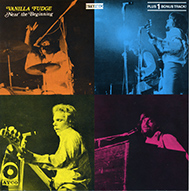 Vanilla Fudge Where Is Happiness Vanilla Fudge have their "immortal song": their "slowed down" version of the hit originally recorded by The Supremes titled You Keep Me Hangin' On sounding today - on single, and in the full-length version that appears in all its glory on the group's first album of same name (1967) - as a perfect archetype of psychedelia. Average writers, the original group members were an explosive vocal and instrumental combination. Vanilla Fudge recorded a second album - The Beat Goes On (1968) - that performed disastrously in the marketplace and that in a way sealed their fate forever, in spite of the titles of those later albums: Renaissance (1968), and Near The Beginning (1969). There were low-charting singles of variable quality such as Where Is My Mind (!), Shotgun, and Some Velvet Morning, but the group forte was to be found in the full-length LP dimension, and in their live concerts. Which makes the album Near The Beginning the best example of the group's value. Side Two recorded live, with Tim Bogert's bass solo - with tapping, a string played outside the fingerboard, and notes played on the pick-up - that can still manage to impress listeners today (those were the days when one was asked, "have you ever heard a bass player like this one?"), with Side One featuring two covers and one original. Somewhere on the Net, there's a TV clip of Shotgun - played live, not playback - showing a very "happy-looking" Tim Bogert on vocals, also playing a bass solo. Written by drummer Carmine Appice - the only group member who had studied music - Where Is Happiness ably negotiates several tempo changes and contrasting sections with a certain degree of complexity. A guitar solo in a "Blues in Bombay" style, a sinister-sounding organ playing a slow arpeggio, an intro featuring piano strings and a rotating Leslie, accelerandos and ritardandos, incredibly fat-sounding drums, and bass notes coming out from the tweeter, even, for a performance that was once synonymous with "knowing how to play". 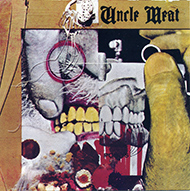 Frank Zappa Cruising For Burgers A good for instance of "cultural variability", at the time the album Uncle Meat (1969) was originally released, a title such as Cruising For Burgers could be a total enigma for European listeners who had yet to watch a movie such as American Graffiti (1973). Though quite short (just 2' 19"), the track is a brilliant example of the masterful way Frank Zappa could organize contrasting sections and daring instrumental couplings in order to produce something that worked to perfection as a whole, and be totally coherent, while at the same time working in a format that one can only define as "a song". Listen to the many guitar sounds, with the final arpeggio - spectacularly assisted by percussion - making a strong contrast to the "pedal" that takes the track to its conclusion. (A real handkerchief moment, or what?) © Beppe Colli 2016 CloudsandClocks.net | Jan. 14, 2016 |
||
 |